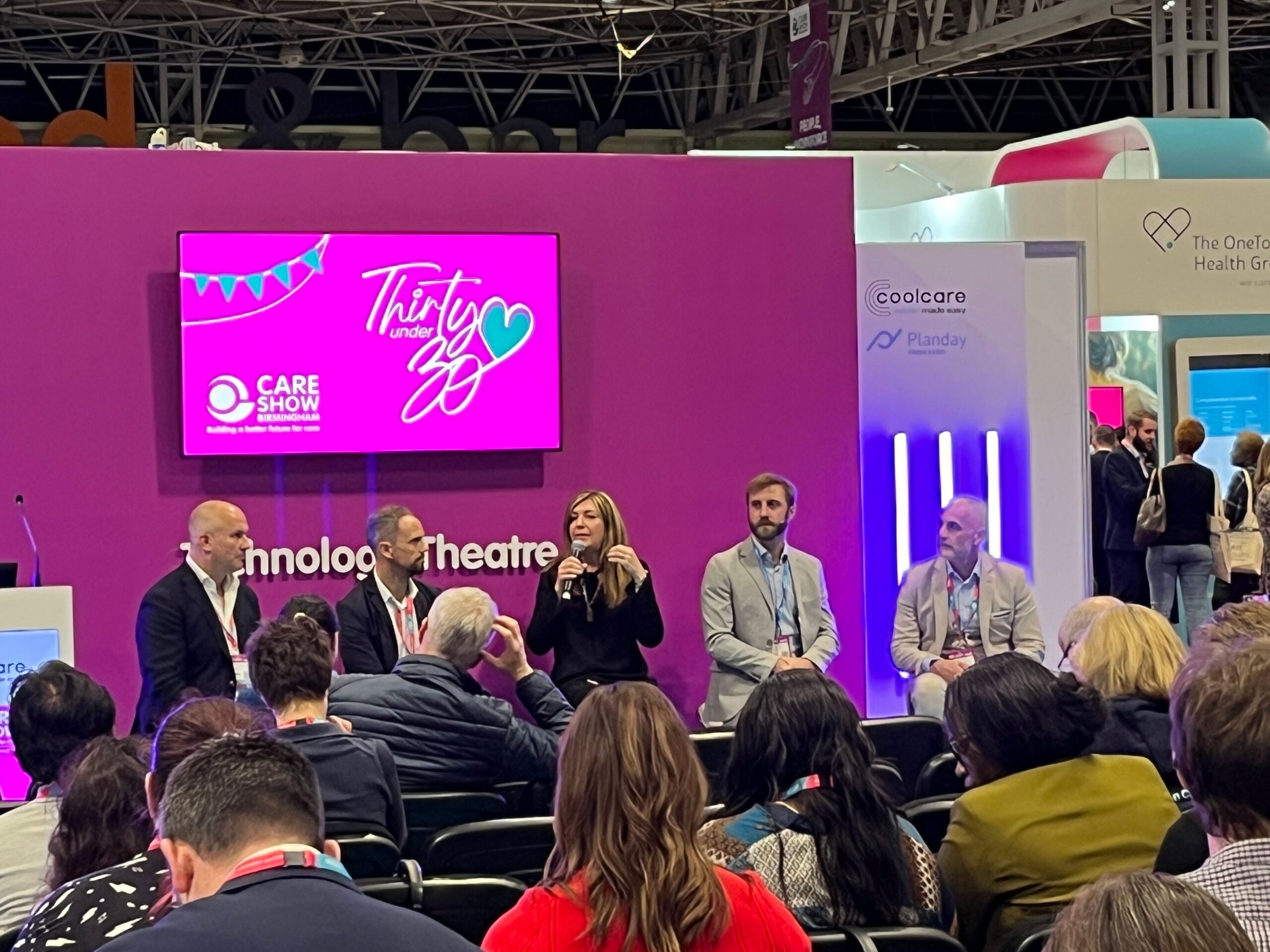As a technology evangelist, Victoria Buyer, Chair Age UK Lancashire our panel chair opened the session up by recognising that as our population grows the social care sector also need smarter provider information about care management and the types of technology that can be beneficial for high quality care services.
“This year we have been celebrating 75 Years of the NHS and our evolution in public health management. Over this time we certainly have made numerous leaps forward with technology used from magnetic resonance imaging (MRI) scanners in the 1980s, to today’s innovations in artificial intelligence (AI), personalised medicine, robotics in surgery.”
“However, the digitisation and transformation within journey within social care and support services has not had either then political appetite or the level of investment as our partners in the NHS.”
But we continue to maintain our resolve! There is always a resistance to technology change in the workplace; it creates uncertainty, and understandably, staff fear of how the technology changes will impact them.
Yet in a crisis, transformation can happen very quickly.
How do we build confidence in our workforce to use technology?
Victoria says the charity was able to deliver some amazing digital transformation projects during the covid pandemic.
‘We quickly got ourselves working on line, digitally connected and really enthused by tech. However, if I’d said to the organisation, in five years implement a workforce technology strategy we probably wouldn’t have managed to consider the numerous options available and moved from older systems to the use of data a digital technology across recruitment, retention and everyday service delivery.
There is a fear of learning something new, particularly from those who are not comfortable with technology. And yet, ‘everyone has a mobile phone’.
‘There is still a disconnection between the workplace technology from the ‘human technology’, the thing that makes us social, and what people use in their everyday personal lives,’ says Victoria.
Breaking down barriers to implementation
Phil Brown, CPO, Kare Inn believes there is a need to connect people with the outcomes and meaning of the work.
‘This is something that we’ve lost; it’s not just about perpetually entering data into a system, instead, we need to present people with outcomes, and demonstrate that their inputs and their actions have a visible and positive consequence on the people they are caring for.’
To overcome the fear and resistant to change, Phil also suggests care providers work on creating ‘digital care champions’, to enthuse staff in the business, and break down the barriers to adopting any new system.
Joined up technology solutions to gain data driven insights
Care technology systems are often convoluted. The rostering system is different to the care management system, which in turn is different to the system used for medication administration.
Victoria pointed out; there is a need for the workforce to see systems seamlessly working together. ‘That way they can sign on once and have access to everything they need.’
Chris Pearson Managing Director UK at MED e-care Healthcare Solution calls for technology providers who are interested in working to engage with other software and hardware providers.
Data driven insights
He notes the one thing that is often overlooked in the early stages, is the need to examine what the data details, and what can be done with it.
Chris advises to look at care quality indicators. ‘For instance, how many people are on a strong sedative? These residents are more likely to fall, or become dehydrated, and may need more staff attention.’
As well as revealing the insights about acutely unwell residents, analysing data can reveal where a provider is inadvertently restricting a person who could have a lot more independence.
Data driven insights will give staff a better picture and 'they can see directly how their actions are having a positive effect on that resident’s life’.
And this requires good data inputting and staff committed to identifying these quality and wellbeing indicators. This data collection is not only for the key lines of enquiry by the regulator, but in terms of how to move quality within care forward in a meaningful and powerful way.
Identify the relevant data points
While there is a swath of data available, Lorcán Murray, Marketing Manager at CarePlanner says its vital care providers understand and define what they want to learn from the data, and by doing this, they can identify relevant data points they need.
These data points will vary according to the provider. For instance, is it the medication people take in a residential care setting, or for home care providers are they more interested in appointment times and travel times between clients?
‘The best ways to get data points is through collaboration. You need to involve people in the process and shape what care looks like,’ Lorcán points out. And this involves everyone - staff and the people receiving the care.
Once the dominators have been established ‘from there you can action change.’
In terms of interoperability, care providers can start to establish functionality of the system, and then partnerships can be put in place to allow systems to share points of data.
What to consider when implementing a system
As well as the care organisation benefitting from a new system, or upgrade in terms of efficiency, a vital consideration which can never be underestimated, is any new technological system must always the benefit the people receiving the care.
Christoph Marr, Managing Director at Marr Procurement says when considering a new product:
- What have you got already? Don’t make the assumption that it doesn’t work; it may be that the system is being underutilised.
- What exactly do you need, both now and in the future?
- Prioritise what is important to you. It could be improving rostering, using technology for remote working or simplifying the payroll process.
- Understand who your internal customer is and how they will use the technology.
- Integration is key; look at how the new system will work with the legacy one and bear in mind, ‘integration is never easy’!
For example, by changing some aspects of the rostering system, it may alleviate workforce challenges:
‘Consider what the system is doing and can do. Then look at how it can be integrated, to avoid effort, with for example, a bank system. That way the gap in your rostering goes direct to your bank team, not to the temporary labour agencies,’ says Christoph.
Using the bank colleagues will reduce the hours paid to agencies. Only after this process has been followed should the automatic request go to your approved temporary agencies.
‘It’s all about using your staff as much as possible; you make the process as seamless as possible and you automate it. And only then do you have to start engaging with contingent labour,’ says Christoph.
In summary
As suppliers we have to take accountability and responsibility for the design of technologies and data management by ensuring they are shaped by and consider the people who use them.
Care providers should also look at how to build confidence within the social care staff to use technology and ensure that it meets the needs of the people supported.




